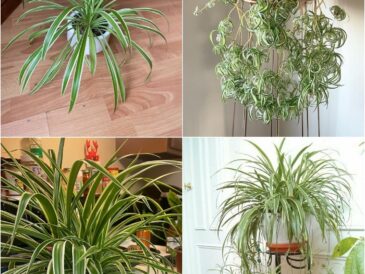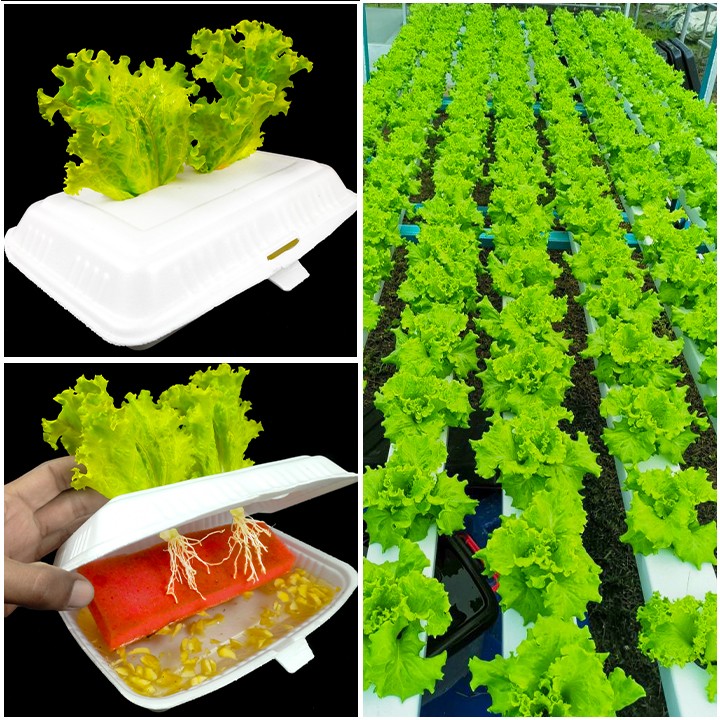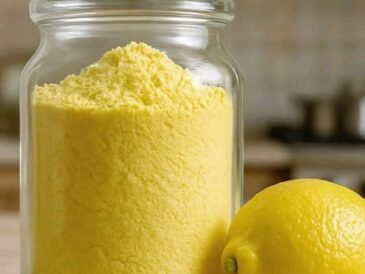Gardening enthusiasts are always looking for new and beneficial plants to add to their green spaces. One herb that has been capturing the attention of gardeners worldwide is borage. Native to the Mediterranean region, this resilient and versatile plant not only adds beauty to any garden but also offers a wide range of benefits that can enhance both your garden and your lifestyle.
If you’re curious about how to take your gardening to the next level, read on. This article explores why borage is quickly becoming a must-have for gardeners of all skill levels. By the end, you’ll understand why so many people are making room for this extraordinary herb.
What is Borage?
Borage (Borago officinalis), sometimes known as starflower, is an annual herb famous for its striking blue, star-shaped flowers and fuzzy leaves. While it may look delicate, borage is incredibly hardy and can thrive in a variety of climates and soil types. Gardeners prize it for its low maintenance and multiple uses, ranging from culinary delights to natural pest control.
1. Nutritional Powerhouse
Borage is not just a pretty face; its leaves and flowers are nutritional goldmines. Rich in vitamins A and C, iron, calcium, and magnesium, borage provides essential nutrients that contribute to your wellbeing. Vitamin A is crucial for vision and immune function, while vitamin C supports skin health and boosts immunity.
How to use borage nutritionally:
- Add young borage leaves to salads for a cucumber-like flavor.
- Infuse borage flowers in water or tea for a mild, refreshing drink.
- Use fresh or dried leaves in soups and stews to add nutrients and flavor.
Consuming borage as part of a balanced diet can help strengthen your immune system, promote healthy skin, and improve overall vitality.
2. Attracts Pollinators and Beneficial Insects
One of the top reasons gardeners swear by borage is its incredible ability to attract pollinators such as bees, butterflies, and hummingbirds. These pollinators are essential for the health and productivity of your entire garden.
Pollinators not only help your fruit and vegetable plants produce more but also increase biodiversity and ecological balance in your garden. By planting borage, you are essentially creating a welcoming environment for these beneficial insects, which in turn help control harmful pests naturally.
Pollinator-friendly gardening tips:
- Plant borage near fruit trees or vegetable patches to boost pollination rates.
- Combine borage with other pollinator-attracting plants like lavender, sunflowers, or coneflowers for a pollinator hotspot.
- Avoid using chemical pesticides that can harm bees and butterflies.
Encouraging pollinators is a natural, eco-friendly way to improve the health and yields of your garden without relying on synthetic chemicals.
3. Excellent Companion Plant
Borage is well-known in the gardening community as a superior companion plant. Companion planting involves growing certain plants close together because they benefit each other in some way — whether by improving growth, enhancing flavor, or deterring pests.
How borage benefits other plants:
- Enhances the growth and flavor of tomatoes, strawberries, cabbages, and squash.
- Repels tomato hornworms and cabbage worms, reducing the need for pesticides.
- Attracts predatory insects like ladybugs and hoverflies that feed on aphids and other pests.
How to incorporate borage as a companion plant:
- Plant borage alongside your vegetable garden beds, especially near susceptible crops like tomatoes and cabbage.
- Use borage as a border plant to protect more vulnerable plants from pest infestations.
- Rotate borage planting areas yearly to maintain soil health.
Companion planting with borage is a natural gardening strategy that reduces pest damage and supports healthy plant development.
4. Medicinal Benefits of Borage
Borage has a long history in traditional medicine, valued for its anti-inflammatory, diuretic, and antioxidant properties. Herbalists have used borage extracts and oils to treat a variety of ailments, including skin conditions, respiratory issues, and joint pain.
Key medicinal properties:
- Anti-inflammatory: Helps reduce swelling and pain, making it useful for arthritis and muscle soreness.
- Antioxidants: Protect cells from oxidative stress, supporting overall health.
- Skin health: Borage oil, rich in gamma-linolenic acid (GLA), promotes skin hydration and reduces eczema symptoms.
Using borage medicinally:
- Borage tea can soothe coughs and respiratory tract inflammation.
- Borage oil supplements are available for skin and joint support (consult with a healthcare professional before use).
- Fresh leaves applied as a poultice may relieve minor skin irritations.
While promising, always approach herbal remedies cautiously and consult with a medical professional, especially if you are pregnant, nursing, or on medication.
5. Enhances Soil Health Naturally
The benefits of borage extend below the surface, literally. The plant’s deep taproots penetrate compacted soil, helping to aerate it and improve drainage. This natural tilling action benefits neighboring plants by allowing roots easier access to air, water, and nutrients.
How borage improves soil:
- Taproots mine nutrients like calcium and bring them closer to the surface where other plants can absorb them.
- When borage plants die back, their decomposing matter adds valuable organic material, enriching the soil’s nutrient content.
- Borage supports beneficial soil microorganisms that improve soil fertility and plant health.
If you’re practicing sustainable or organic gardening, incorporating borage into your planting routine can reduce the need for artificial fertilizers and improve long-term soil vitality.
6. Culinary Uses: More Than Just Decoration
Borage isn’t just a plant for looks or health — it’s a culinary gem. Its cucumber-flavored leaves and edible blue flowers have been used in traditional European cuisine for centuries.
Popular culinary uses:
- Add young leaves raw or cooked to salads, soups, and stews.
- Use flowers as a beautiful and flavorful garnish for cocktails, desserts, and summer drinks like lemonade.
- Infuse borage flowers in syrups or jellies for unique flavors.
Borage’s mild taste makes it versatile in the kitchen, perfect for gardeners who want to experiment with fresh, homegrown ingredients.
7. Easy to Grow and Maintain
Borage is a perfect plant for beginner gardeners and busy gardeners alike because it requires very little care.
Growing tips:
- Sow seeds directly in the garden after the last frost, or start indoors 4-6 weeks earlier.
- Prefers full sun but tolerates partial shade.
- Thrives in well-drained soil but is quite drought-tolerant once established.
- Does not require much fertilization.
- Self-seeds prolifically, meaning it will often come back year after year without replanting.
Its fast growth and low maintenance needs make borage an excellent addition to any garden, especially for those who want maximum benefits with minimal effort.
8. Sustainable Gardening and Environmental Benefits
As gardeners become more eco-conscious, borage offers an excellent example of sustainable gardening practices. It supports biodiversity, reduces reliance on chemical pesticides, and helps create a resilient garden ecosystem.
Environmental perks:
- Supports pollinators crucial for food production worldwide.
- Attracts beneficial insects that naturally control pest populations.
- Enhances soil quality, reducing erosion and nutrient runoff.
- Provides habitat and food for wildlife.
Incorporating borage is a simple way to make your garden more environmentally friendly, contributing to global efforts to protect pollinator populations and promote sustainable agriculture.
9. How to Plant and Care for Borage
Planting steps:
- Choose a sunny spot with well-drained soil.
- Sow seeds ¼ inch deep, spaced about 12 inches apart.
- Water gently but regularly until seedlings establish.
- Thin plants if needed to avoid overcrowding.
Maintenance:
- Water during dry spells, but avoid overwatering.
- Deadhead flowers to encourage more blooms or let some go to seed for self-sowing.
- Remove any diseased or damaged leaves to prevent issues.
10. Harvesting and Using Borage
Harvest borage leaves when they are young and tender for best flavor. Older leaves become rough and hairy, which may be unpleasant to eat.
Harvest tips:
- Pick leaves in the morning when essential oils are most concentrated.
- Harvest flowers throughout the growing season for continuous use.
- Store fresh leaves in the fridge wrapped in a damp cloth for a few days.
11. Potential Cautions and Considerations
While borage is generally safe for most people and animals, it contains small amounts of pyrrolizidine alkaloids, which can be toxic if consumed in very large quantities over long periods. Pregnant women and people with liver conditions should consult a healthcare provider before using borage medicinally or in large amounts.
Conclusion
Borage is much more than just a pretty herb — it’s a multifunctional powerhouse that offers nutritional benefits, attracts pollinators, protects other plants, improves soil, and even adds flavor to your meals. Whether you’re a beginner gardener or a seasoned pro, adding borage to your garden is an easy, natural way to boost your garden’s health and sustainability.
By planting borage, you’re investing in a vibrant, eco-friendly garden that supports wildlife and delivers countless rewards. So why wait? Grab some borage seeds, and watch your garden thrive with this extraordinary herb.





